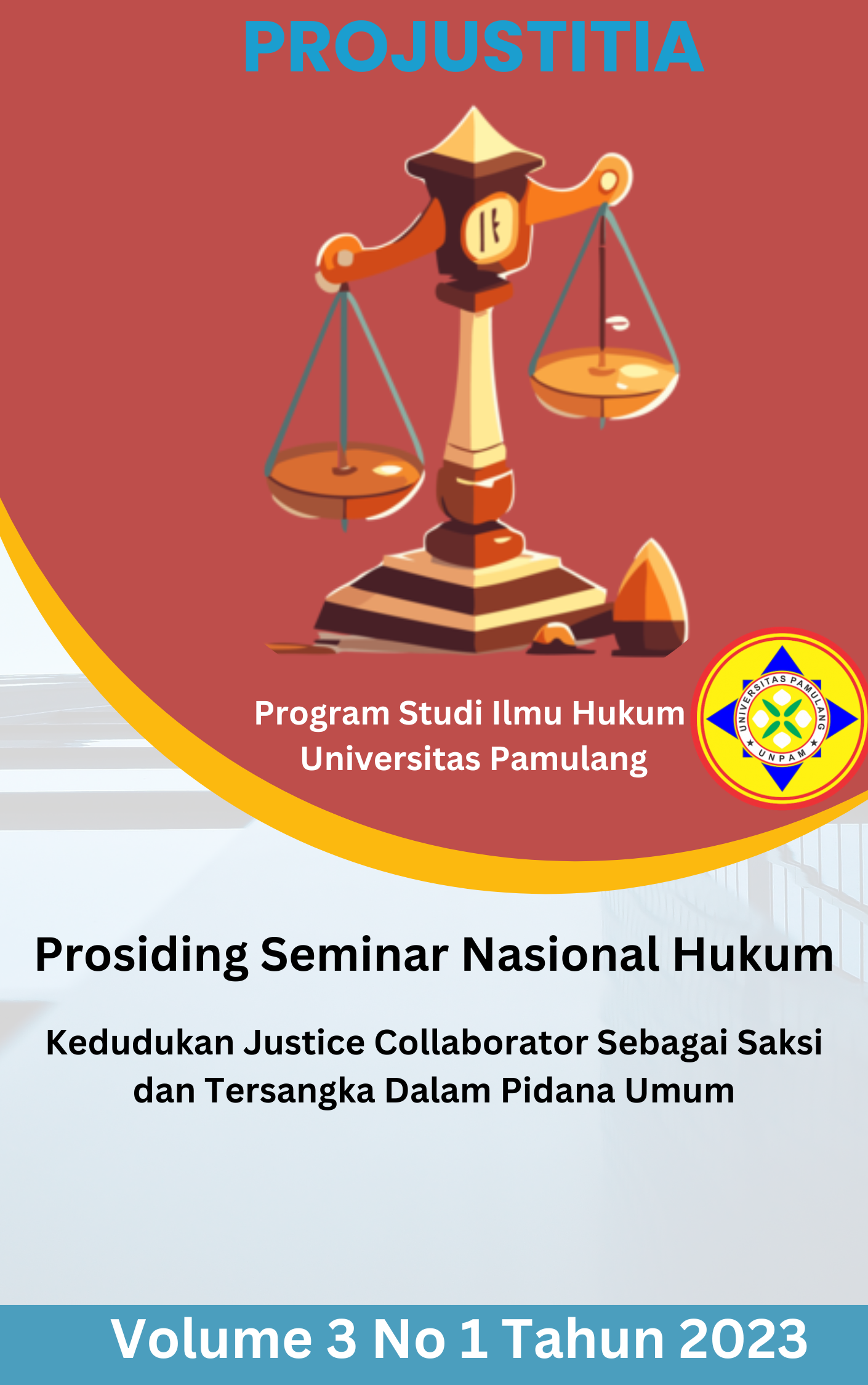KETENTUAN PEMENUHAN HAK ANAK LUAR KAWIN ATAS PENERIMAAN HARTA WARISAN DITINJAU DARI KITAB UNDANGUNDANG HUKUM PERDATA (Studi Kasus: Putusan Mahkamah Agung Nomor 334 PK/Pdt/2020)
Abstract
This research was conducted to find out how the provisions for children out of wedlock are recognized according to the Civil Code and how the rights and position of children out of wedlock are recognized in inheritance according to the Civil Code. By using normative juridical research methods, it can be concluded: Every child born out of legal wedlock is a child out of wedlock. Based on the provisions of the Civil Code, children out of wedlock are considered to have no legal relationship with their parents if there is no recognition from the father or mother, thus if the child out of wedlock is recognized then he can inherit the inheritance from the parents who acknowledge him. The form of child protection out of wedlock that can be recognized is based on Article 272 of the Civil Code, namely: "An out-ofwedlock child that can be recognized is a child born to a mother but who is not conceived by a man who is in a legal marriage bond with the child's mother." and does not include the group of children of adultery and incestuous children. The legal position of children out of wedlock in terms of the distribution of inheritance which is different from that of legitimate children is often found to be wrong. In this event, an error in the division of inheritance between legitimate and illegitimate children was still found in the case of the Supreme Court Review Decision Number 334 PK/Pdt/2020 dated June 23, 2020. Whereas the legal position of an illegitimate child who fulfills Article 272 of the Civil Code as a legitimate child has the same rights. Meanwhile, children out of wedlock who do not comply with Article 272 of the Civil Code can obtain legal protection in the form of receiving grants or testamentary grants.
Keywords : children out of wedlock, Legal Standing, and Legal Protection


